Lug Theme
My good friends who are Azalea have released a video of their recording of one of the songs of the show.

My good friends who are Azalea have released a video of their recording of one of the songs of the show.
In the beginning when the Creative Exchange was the Hamilton Film Liaison a group of us wanted to put our resources to use and create a short film to showcase Hamilton’s special locations, and by their participation, the talented people who live here.
We came up with a Romantic Mystery that would take 2 investigators all around Hamilton.
With Adriano La Vella writing and Jon Soyka and I story editing we ended up with a nice tight little script that paired a gawky professor with a streetlevel PI and sent them off, on foot, looking for a missing piece of McMaster lab material – a slice of Einstein’s brain. If they don’t find it by the end of the weekend the professor loses his job.
The underlying hook of the story is that during the search the PI and the Lab Assistant fall for each other.
Normally there are only a set number of locations you can show off without becoming tedious but we overcame that obstacle by messing with continuity.
We designed many scenes as walk and talks to exploit that.
For example, we plan to show them delivering continuous dialogue while walking out of an outdoor apartment corridor on Quigley Road and step down onto James street, then turn down an alleyway in Dundas and walk past a graffiti wall in the downtown core.
The only people who are in on the joke are those who know Hamilton.
Thanks to Alexis – Marcio – Stephen – Daryl – and Ingy we created a rough version of the first scene just to spark ideas.
Because this is about promoting ourselves and the city this is a completely volunteer project – when we are assured we have support in all areas we will go ahead. But that is up to you by spreading the word or becoming part of the project which is designed to help each other boost each other.
The script is available for anyone to read.
J. Aldric Gaudet
Halloween traditions. How did they start.
I dealt with that in Ween one of the 5 Fables for the Young at Heart.
Here is an excerpt:
John’s hat brim bobbed as he nodded and asked, “What do you know about All Hallow’s Evening?”
Patrick was startled to hear him use Nana’s words.
“Trick-or-treat, costumes, candy, pumpkins, soaped windows, black cats, etcetera, etcetera,” Rose recited immediately.
“That is Halloween,” John said. “What do you know about All Hallow’s Evening, from time gone by?”
“It’s a time of magic,” Patrick said, irritated that Rose would answer a question clearly within his area of expertise. “It’s a time when spirits roam the world and give magic a boost.”
“A very unstable time,” agreed John.
Something about the way he said it made Andrew renew his search for any familiar landmark.
“Halloween is like a nickname,” Patrick explained. “All Hallow’s Evening, E’enin’, E’en. Hallow E’en’ because it’s the night before All Hallow’s Day, or All Saint’s Day.”
“That is what it is called,” John said. “That is not what it is.”
Andrew wished he could see John’s face. Sometimes you could get a hint what adults meant if you could see the expressions on their faces.
“Long before there was an All Hallow’s Day,” continued John. “There were celebrations on this night.”
Rose chipped in with a crack, “When people lived in caves?”
John remained unswayed by her attitude. “It could have started that long ago. But it was not until there were farms and villages that people gathered on this night.”
“In the Olde Country,” Patrick said using Nana’s phrase.
“Yes,” John agreed. “Over there, and here, winters were harsh. People died from the cold, or from the hunger, or both. And so they measured their year to harvest’s end. That was when they stopped putting livestock out to pasture, preparing many for slaughter in order to survive the coming weather. At the death of the old year they celebrated all that enriched their lives because they were about to face terrible hardships.”
“Why not celebrate in the spring when everything was better?” Rose asked.
“They did. In the spring they consumed whatever had not been consumed, congratulating themselves for surviving, but at harvest time, when the sun’s warmth became distant, the people remembered a time without the sun and feared for its return. They built bonfires to mark the end of the sun’s reign, wishing each other good fortune until the sun’s return.
“All Hallow’s Evening is time set aside to remember the fallen and hope for the future. It is time set aside for making wishes, for calling magic. Changing names on a calendar does not change reality. The Olde New Year, the Magic New Year, begins on the first day of November.”
“That’s not Halloween!” Rose cried out. “Halloween is on October thirty-first!”
John stopped walking and turned to her, “As their year ended when the sun faded, so their day ended when the sun set. October thirty-first ends when the sun sets and November first is born.”
He turned around and resumed walking.
“I thought we waited until dark so we had time to put our costumes on,” Rose whispered to Patrick.
A little further along in the story more traditions are discussed:
Rose was the first to break the silence, “If this all started in the Olde Country as Patrick calls it, why pumpkins?” she asked. “They’re North American.”
“True, they are a recent addition to a long time practice,” John replied. “But they are superb. They are easy to hollow. They even look like spawn of the harvest moon.”
“Why hollow any vegetable?” Rose persisted.
“Tradition. In the Olde Country, on All Hallow’s Evening, children travelled over the countryside from farm to farm begging for Soul Cakes. Glass was too precious to be allowed outdoors, so they lit their way with candles protected from the wind inside a hollowed out gourd
.
“When they knocked on the door of a person of poverty – – if there were no Soul Cakes – – they asked for candles to keep their way lit. When they knocked on the door of a person of wealth – – if there were no Soul Cakes – – they asked for money to buy candles. Persons who gave nothing were warned that the imps would target them for their earthside pranks.”John paused as they stopped on a rise overlooking the two bonfires. They could see the fresh fire flash momentarily brighter as the last of the new wood collapsed into it. The stale fire glowed with orange cracks cutting through its dark ash.
“There is an ancient legend about a lantern of eternal fire,” John said.
“And I bet you’re going to tell us about it,” Rose cracked causing Andrew to laugh. Patrick swatted both their shoulders.
John faced the three friends, pumpkin light boiling in their eyes, and spoke to Rose.
“A long time ago there lived a selfish peddler who never did anything unless he got something out of it. He did not care about anyone but himself and he never gave a gift unless he expected a gift in return, always making sure that what he gave was of lesser value than what he expected to get.
“The peddler was clever and tricked people into doing things for him. As a result he became very successful. The peddler always boasted that he had made his own way, by his own schemes, never acknowledging help from any other source, even refusing to believe in luck or fate.
“One day, the devil came to meet him, having heard about the peddler’s deeds. The devil knew he would soon die in a carriage crash and wanted to make arrangements for the peddler’s soul. The peddler wouldn’t agree to the terms and during their debate he tricked the devil and trapped him inside an outhouse by scratching a cross on its door. He refused to open the door until the devil promised never to take his soul.
“The peddler figured that playing such a trick on the devil would be an instant guarantee of a place in heaven. But on the night of the carriage crash, he was turned away from heaven’s gate for having lived such a greedy and selfish life. As for tricking the devil, the peddler was told it was easy for a clever person to trick someone as greedy as the devil.
“The peddler felt cheated by heaven and planned to get revenge by offering his services to the devil. When he arrived at the gates of hell the devil refused to meet with him and he was denied entry. The peddler asked the devil’s gatekeeper where his spirit could rest and was told there was no place for him to rest, that he must always wander the outer world. When he complained that the way back was dark, the devil’s gatekeeper threw a lump of hell’s coal at him. ‘Take that and go!’
“And so the peddler hollowed out a turnip and put the piece of hell’s coal inside to light his way.
“Ever since then, he has wandered the night, travelling every road, looking for lost souls who need to find their way.”

Community theatre is an exciting way to bring diverse peoples together. The resources necessary to mount a production involve volunteers of all ages, from all segments of the population, who participate on equal terms interacting and co-operating to create one special celebratory event.
This event is designed to include those not ordinarily considered for the chorus line.
That is what the original story is about. The wounded and the broken. But it is not a sad story, it is a joyous one, a celebration.
The project intends to break new ground.
Creatives will be challenged to design a fully flexible inclusive work, to create musical pieces that can integrate all ranges of music and dance ability, including wheelchair choreography.
Ornament costumes can be as simple as children dressed in black, carrying iconic placards, or as complicated as full body costumes. This deliberate flexibility allows for the inclusion of dancers with missing or damaged limbs who will fit right in with the story of damaged ornaments.
The song and dance numbers will be designed to include as many talented enthusiasts as are capable of taking part, each production a reflection of that community’s unique perspective.
Every challenge is a creative and artistic opportunity to forge another element into the shape of the final outcome.

Lug, one of the ornaments, serves as Master of Ceremonies. He introduces the other ornaments who perform a dance parade and then their puppet double takes its place on the puppet tree.
A new ornament, Hummingbird, complains that the others are all damaged so Lug explains how hand-carved ornaments made by a loving father led to the life force infusing the tree and how that spirit passed along from father, to son, to granddaughter.
Those moments are re-enacted in vignettes spanning many years in once-a-Christmas glimpses.
The ornaments also re-enact their own stories, the climactic one being the enigmatic love story between Drummer Boy and Ballerina who fell in love at first suspension.
The initial parade of ornaments, the linking ceremony, swinging, and the mirror duet are the main song and dance numbers that surround this enchanting story, integrating dance, swinging, videography and puppetry.
In the end a series of accidents results in the tree catching fire, putting the family at risk.
The ornaments frantically swing together rocking the tree back and forth trying to tip it over but it doesn’t until Ballerina sacrifices herself to save them all.
The big finish begins when the granddaughter glues Drummer Boy to the mirrored dance floor in place of the lost Ballerina.
With his drum gone and his sticks broken in the fall, his arms are poised as if holding an invisible partner.
His dance is a poignant soulful one of loss.
The ornaments hold a special linking ceremony and Ballerina’s reflection appears in the mirrored floor at his feet. She and Drummer Boy dance an imaginary dance, reflection to reflection.
Everyone joins in for the closing number, swinging and singing in joyful celebration.
Centrestage Right for the home sets where the family stories are re-enacted on a turntable set that rotates during blackouts to exchange set pieces.
Centrestage for the tree which is operated by puppetry.
That leaves Centrestage Left clear for the swinging plus all Downstage areas for the parades, dances and other choreography.
Video screens either side of the proscenium show live close-up coverage from remote controlled cameras of the actions of the puppet ornaments in the tree.
At the upper corners of the proscenium are spotlight areas where Lug and Hummingbird interact and narrate.
A gathering of creative performance artists with the purpose of designing a community event that celebrates theatre, encourages the disenfranchised to participate, and showcases local talent.
The event is a celebration of the Christmas season, the staging of a life-affirming musical fantasy.
It is the kind of project that vitalizes a community because it brings people together from various areas of life, ages and skill sets. That is its exciting dynamic. Parents can keep an eye on their rehearsing children while helping construct a set, or vice versa.
Those who come as audience will enjoy the show’s uplifting theme. Those who participate will become the theme, as the project itself is as much the theme as the story is.
The intent is to make the cliche hold true, use every challenge as a creative and artistic opportunity to forge another element into the shape of the final outcome.
The focus will always be making integration into each community as seamless as possible. That begins at the design stage as various artists working together, create plans and descriptions, then during preproduction as ideas develop and plans are adjusted, and finally after the show closes, where final reports are made based on hindsight.
The results will be the template for the show, completely flexible and adjustable for any community, and therefore each performance becomes a reflection of that community’s unique point of view.
Artistic Director – J. Aldric Gaudet – to oversee the project’s mandate and execution.
Director – to design the blueprint for the show and direct the first cast.
Choreographer – to design the dance numbers, integrating wheelchairs and swing work and manage the first performers. To create a template document.
Puppet Master – Melanie Skene – to design, create and construct puppets and train the first operators.
Composer – Mia Hackett – to write the music and to guide the first musicians.
Songwriter – Benjamin Hackett – to write the lyrics and guide the first singers.
Aerialist – to design the rig and to train the first swingers.
Set Designer – to create the style of the set and integrate it for quick scene changes and manage the first crew. To create a template document.
Costume designer – to design the costumes in consultation with the Puppet Master and manage the first wardrobe team. To create a template document.
Lighting Designer – to plan and design the lighting and manage the first tech team. To create a template document.
Video Technician – to program and coordinate the video and live cameras and manage the first video team. To create a template document.
Audio Designer and Technician – to plan and coordinate the sound and manage the first sound team. To create a template document.
Stage Manager – to schedule and coordinate the rehearsals and staging of the show. To create a template document.
If you want to be on the shape team contact me.
When I first read Poe’s story about a prisoner being tormented by unseen jailers, I visualized it. I saw the prisoner, the cell, the pit, the fiery walls, all quite vividly in my mind’s eye.
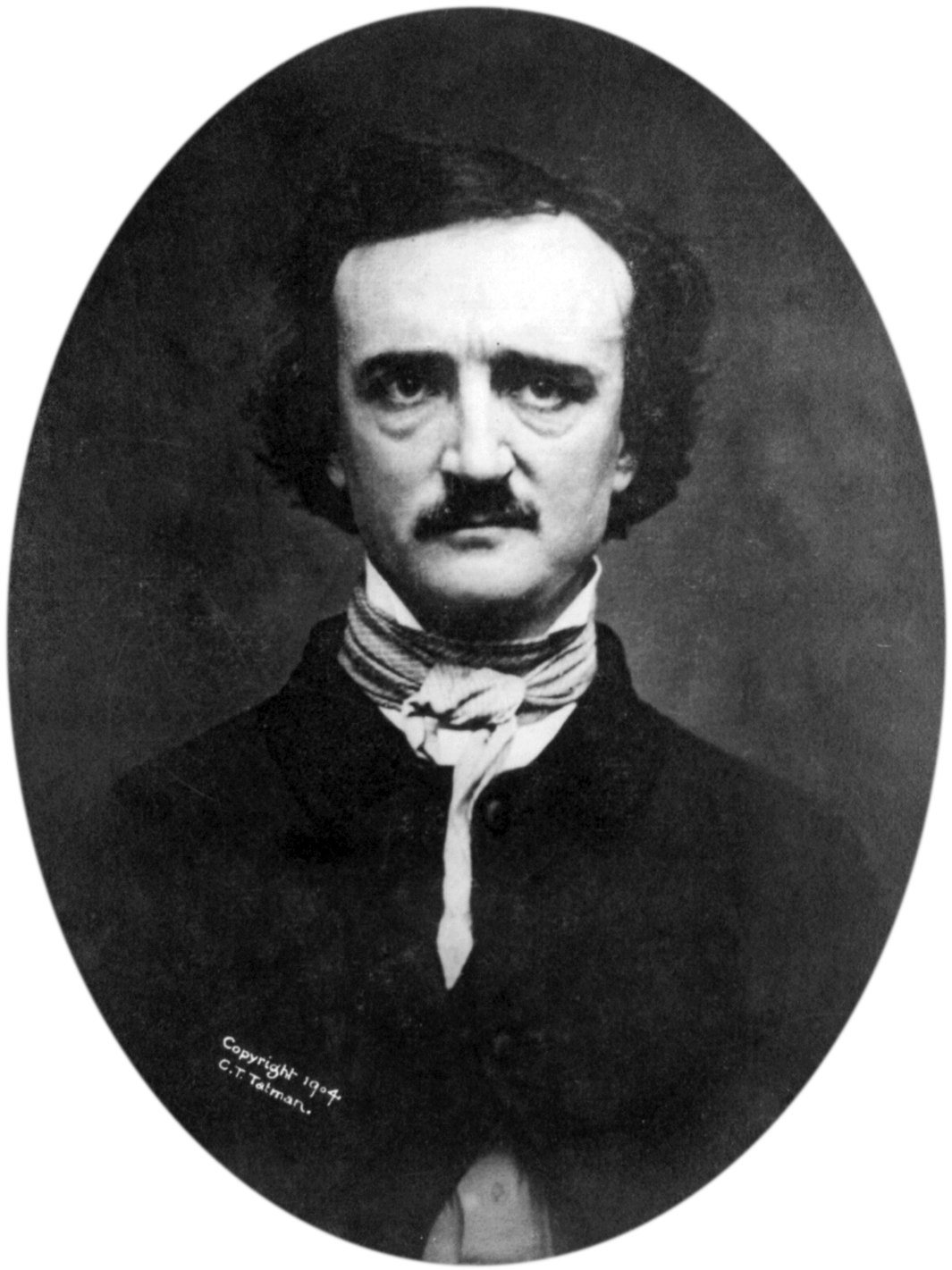
For that is the power of well crafted words, they provide brushes for the reader’s imagination to paint with.
Cinema can do the same, yet few filmmakers are able to restrain themselves from papering over everything.
“By offering an incomplete image or process, Poe involved his readers in the creative process in a way that Baudelaire, Valery, T. S. Eliot, and many others have admired and followed. Poe had grasped at once the electric dynamic as one of public participation in creativity. Nevertheless, even today the homogenized consumer complains when asked to participate in creating or completing an abstract poem or painting or structure of any kind. Yet Poe knew even then that participation in depth followed at once from the telegraph mosaic.” Marshall McLuhan – Understanding Media (1964)
Poe’s story is the perfect vehicle to demonstrate this in cinema.
The Pit and the Pendulum is a first person narrative with no onscreen dialogue which means the narrator and the prisoner can be different people.
The power of the concept comes from using cinema techniques to influence the Viewer’s imagination, so the less shown, the better.

Consider the famous shower scene in Psycho. Many believed they saw the knife puncture the flesh, the moment was so powerful, yet every student of cinema knows the knife never punctured anything.
How is the Viewer made to imagine they are seeing something that is not there?

Consider the opening scenes of Jaws when the girl is attacked by the shark. The Viewer imagines what is happening beneath the water and the moment is all the more horrifying because of it.
A wide shot of darkness, one person, the Prisoner, clad in simple grey pajamas, is lit by a single pool of light. There are no details or textures, it is simply blackness surrounding her.
The Prisoner stands looking up listening while unseen judges pass sentence, as told by Poe’s Narrator. Silhouettes of candles represent the judges.
After sentencing the Prisoner passes out and finds herself transported to a dark dungeon.
She gropes her way around blindly, and while pacing out the size of her cell, stumbles, falling at the edge of a circle of light – the edge of the pit she almost stepped into.
We look up at her looking down while the narrator describes her conjectures about what might be waiting for her in the pit.
The Prisoner backs herself into a corner and huddles there determined not to move. She passes out again.
The Prisoner’s thoughts upon re-awakening to discover herself strapped down on her back and her ensuing observations of her surroundings, the discovery of the rats, and then of the Pendulum, are narrated while we study her from multiple angles.
Many elements together make this sequence terrifyingly real:
a GUST of air to disturb her hair when the blade passes close;
the SOUND of heavy gears moving during the swing;
a rhythmic WHOOSH which grows in presence as the blade descends,
the WHISTLE of its steel when it is passes closest;
pendulum POV shots swinging over the Prisoner,
and ACTING skills
all provide depth and texture, working together to transport the Viewer into the claustrophobic, mind-wrenching world of Edgar Allan Poe.
To get that kind of involvement, that kind of commitment, from the Viewer, requires effective use of every cinematic technique at our fingertips, lighting, cinematography, acting, Foley, editing, etc., to provide enough sensory imprints with which the Viewer can construct a personalized setting for the horrifying events.
The massive pendulum mechanism is made from the movement of shadows and flashes of light which provide the framework for the Narrator’s words.
The Viewer is the architect of the dungeon, its smells, its textures, and will create far more terrifying images than any that can be built.
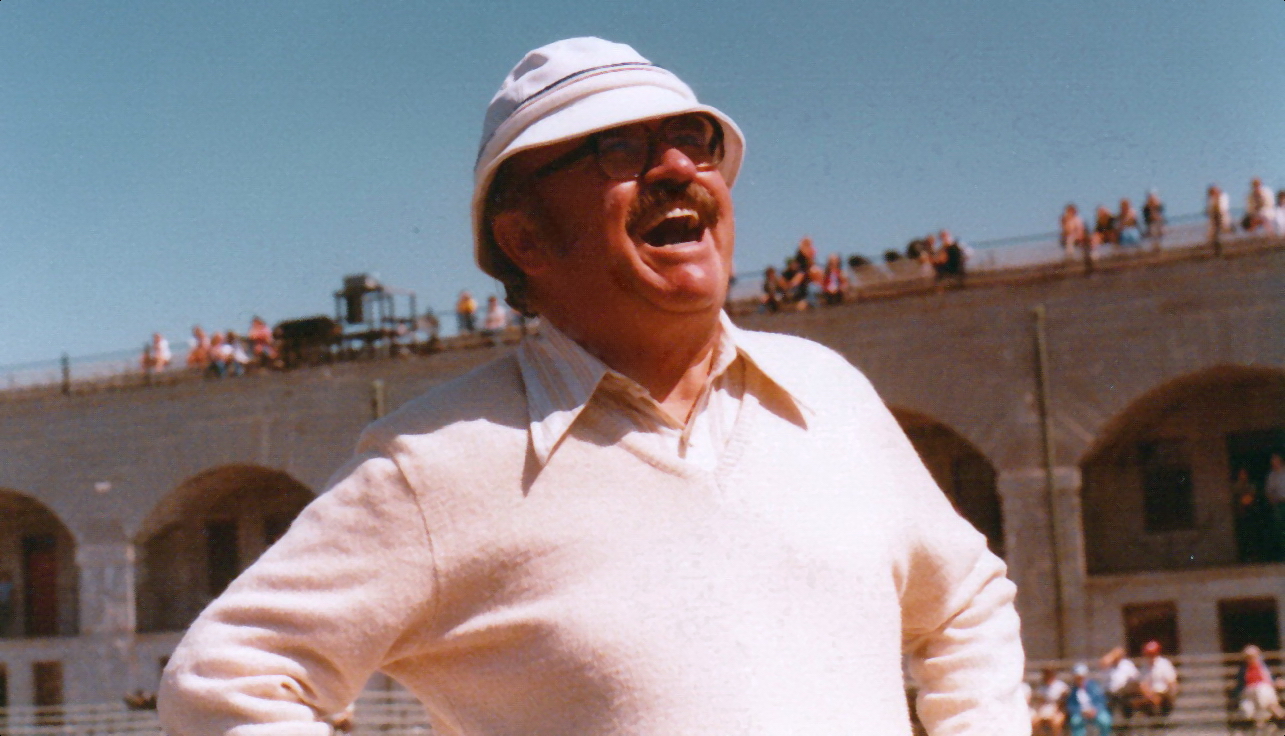
The roots of this was a project Elwy Yost and I were working on. He wanted to narrate classic stories in the public domain and add simple visuals as illustrations. Although the project did not get the greenlight one of the stories we planned to do stuck in my mind.
A story narrated by the victim of unseen tormentors.
“In the confusion attending my fall, I did not immediately apprehend a somewhat startling circumstance, which yet, in a few seconds afterward arrested my attention. It was this: my chin rested upon the floor of the prison, but the upper portion of my head touched nothing. At the same time, my forehead seemed bathed in a clammy vapor, and the peculiar smell of decayed fungus arose to my nostrils. I put forward my arm, and shuddered to find that I had fallen at the very brink of a circular pit.”
Narration that is as terrifying as any imagined horror.
“I quivered in every nerve to think how slight a sinking of the machinery would precipitate that keen, glistening axe upon my chest. I saw that some ten or twelve vibrations would bring the steel in actual contact with my robe — and with this observation there suddenly came over my spirit all the keen, collected calmness of despair.”
With a little judicious editing of a few dated references, the story becomes universal, timeless, it could take place in 1843, 1943, or 2043.
Edgar Allan Poe’s name has proven staying power and interest. His works have been international classics since the 19th century.
He is respected as a respected American author in both literary and popular circles so there will be interest.
As Elwy saw it, this is about illustrating a classic rather than re-interpretating it.
It waits upon timing, funding, and an actor skilled in body movement.
I have a table at this year’s Art-O-Con to launch the Piper, a graphic novel drawn for me by Art-O-Con’s host, Paul Schultz.
I will have my other books, their artwork, and buttons for sale.
Drop over and say hello.
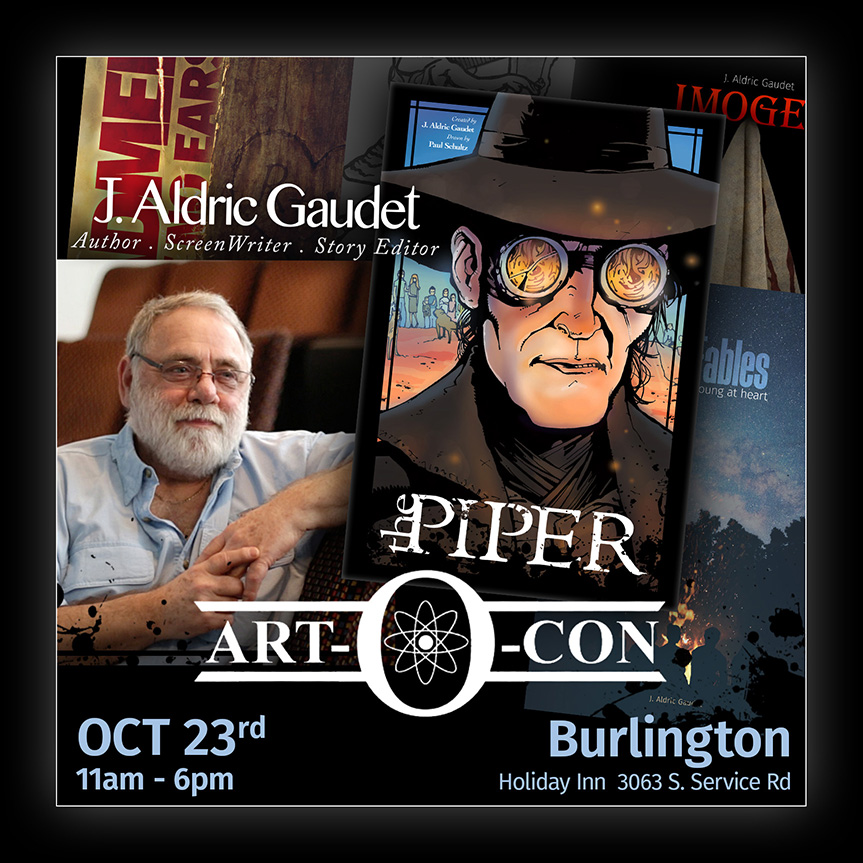
Add your name for a poster draw and get a sticker.
Pick up one of our sample cards to show your friends.
Watch some video of Paul at the drawing table.
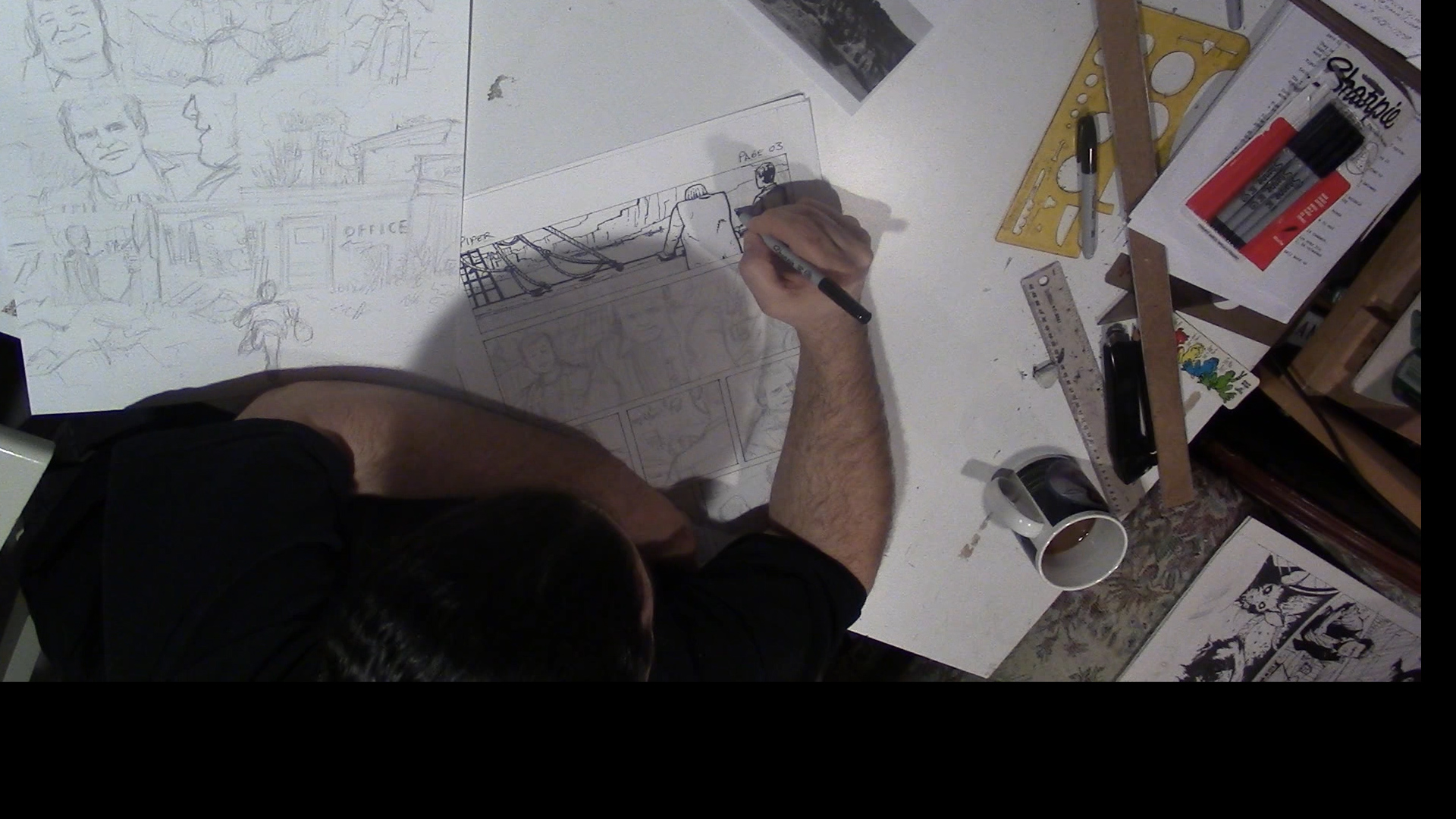
Paul and I have been working steadily on this for 3 years. I wrote the script, then Paul and I painstakingly worked the story out into panels, he did the final inks, and I set each page for publishing.
Now it is complete.
Now it needs readers.
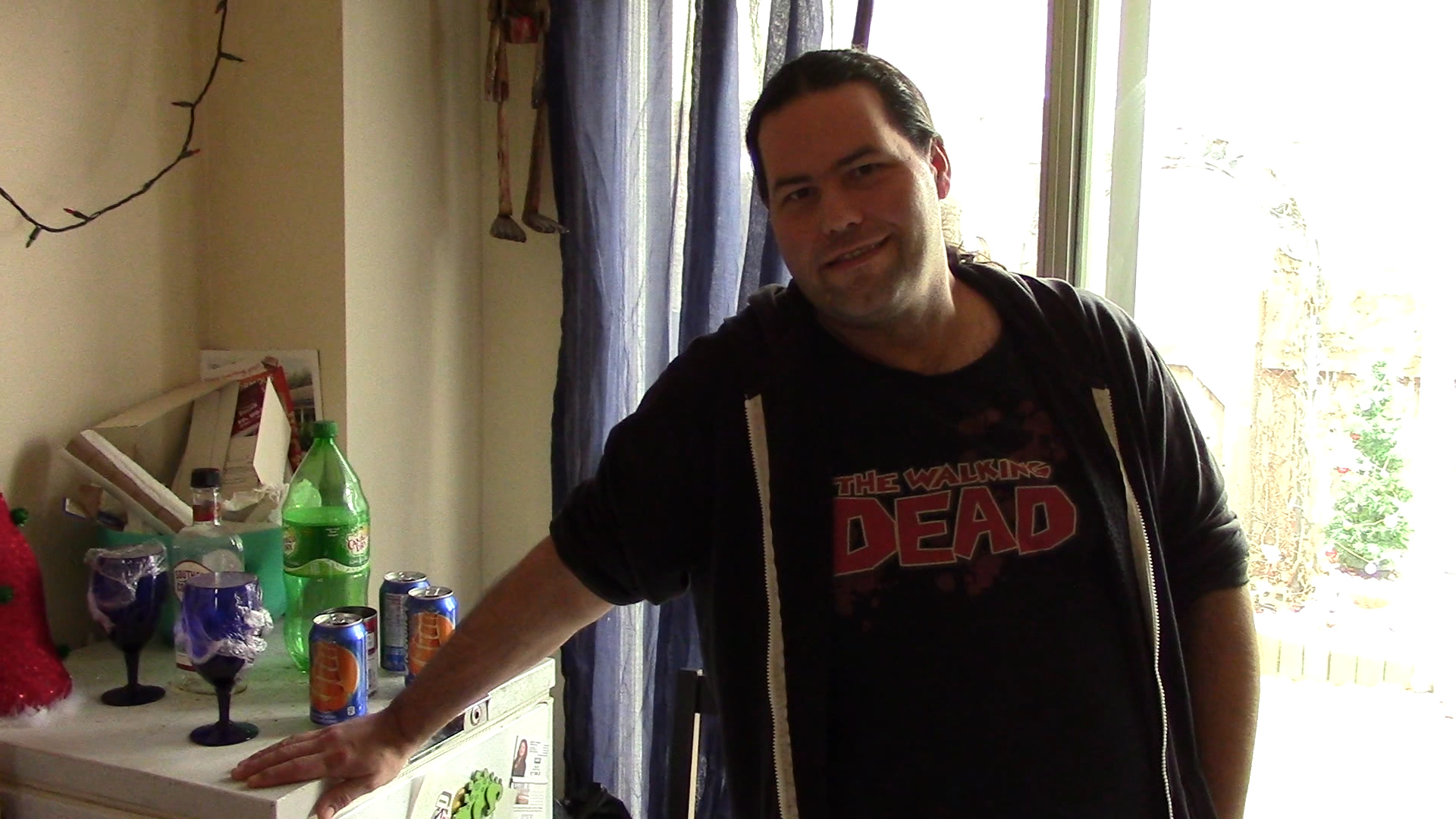

Buy a copy online and bring it to the show for our autographs. Or purchase a copy at the show, but come early as supplies are limited.
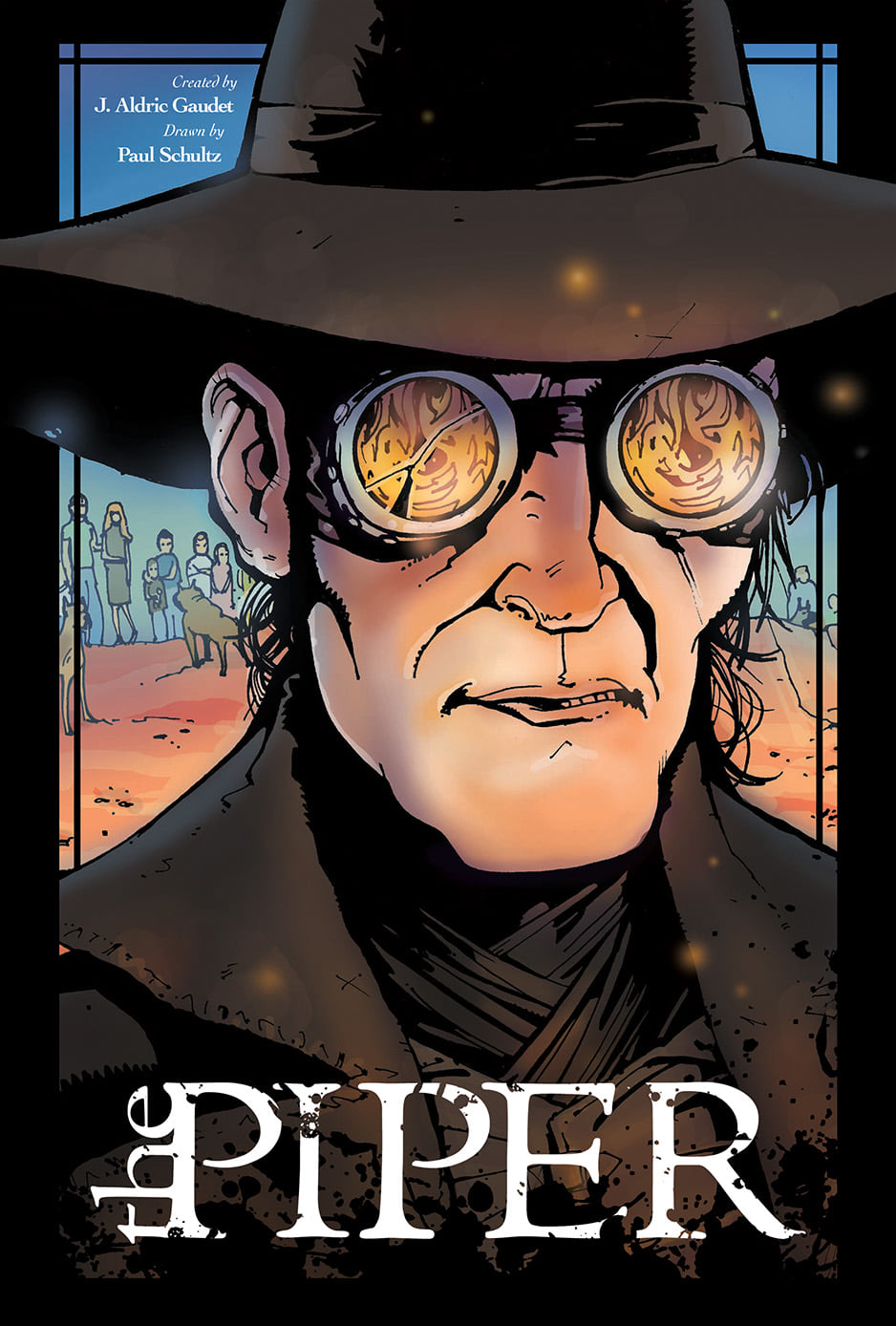
After seeing Atom Egoyan’s film The Sweet Hereafter, I wanted to try and understand it so I looked deeper and learned it was based on a novel of the same name and both were about the aftermath in a town where all the children had been taken away. In this case, due to a tragic school bus accident. Incredibly depressing.
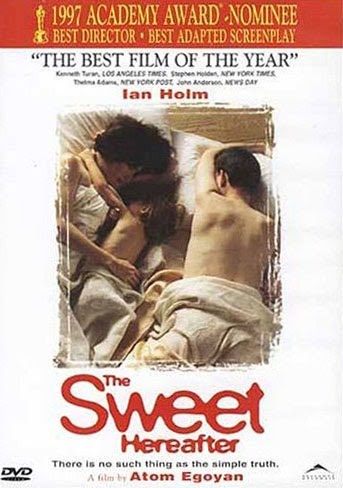
In their comments both creators referred to the legend of the Pied Piper as inspiration. I thought: ‘the legend can’t be that depressing.’ Yeah, it can. And worse. In the legend, the children are taken away and sealed inside a mountain forever.
I could not imagine a more depressing story to tell.
The Contrarian that I am wanted to turn the story upside down. Have the pipe make horrible noise instead of sweet music, and save the children. Make it as terrifying as possible but give it a happy ending. I set it in a post-apocalyptic future without electricity or machines. A medieval lifestyle set amongst the ruins of a future I call: The Future Past.
It was fun to write but when I came to my senses I knew such a screenplay would take forever to get produced. There are too many hurdles for movie makers. Working with children is difficult and requires strict rules of work hours. Horses and their handlers require food, training and shelter. Dogs even more so, although CGI work like that used in The Revenant would make it simpler, CGI actually raises costs. Fire effects and explosions, plus stunts, require even more time and effort.
But I still wrote it. It was entertaining. I just didn’t care how I would ever get the movie made.
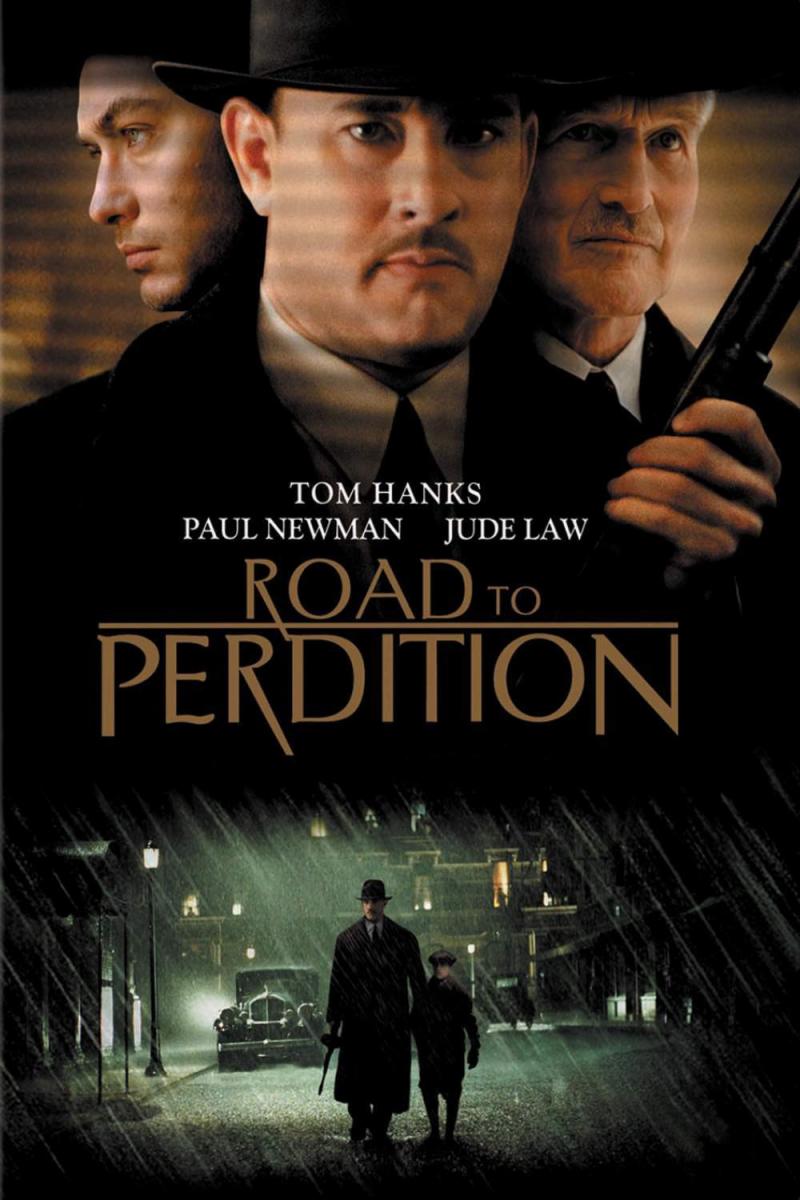
Then I saw Road to Perdition, a live action movie made from a graphic novel and realized that there was a way to tell this story without incurring all those prohibitive costs. A creative artist can take us anywhere with a few brush strokes. I could turn the screenplay into a graphic novel, except I can’t draw a circle. I had to find someone who could, and would, be willing to tell my story.

There have been a lot of ‘what if’s in my life, after all I am a writer and ‘what if’s are the stock and trade.
I will start by outlining my intention for these journals. I plan to write about the circumstances that led to, or surround, the projects I have worked on and am working on. There are always interesting circumstances.
Like the circumstances behind the screenplay of the movie Baltic Storm – and the movie that could have been.
The circumstances behind the screenplay of yet-to-be movie Flight To Oblivion: Anatomy of a Hijacking and the true events that inspired it. A movie that needs to be made.
The ancient Halloween traditions that were woven into the fabric of the story Ween.
The development of the story Scooter which began as an episode of the TV series The Littlest Hobo.
The circumstances behind Error-2000 and my discovery that the producers and director were unimaginative filmmakers.
To those Shakespeare fans who drop by I plan to write about the amusing discoveries I made about Romeo and Juliet, Cymbeline, and Hamlet while culling through 400 years of published arguments between experts about the meanings of certain words or phrases.
Inevitably a movie I see will spark me to comment on some aspect of filmmaking, screenwriting, or film editing under the umbrella StoryTelling_OnScreen. ST_OS.

Occasionally these little ‘what if’s may appear. Sort of like Easter eggs. Because sometimes the ‘what if’ isn’t a story.
What if politicians who voted themselves a pay raise had to wait until after the next election before the raise took effect?
– JAG